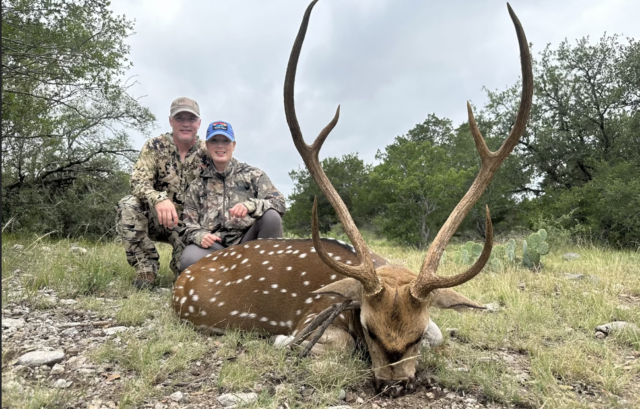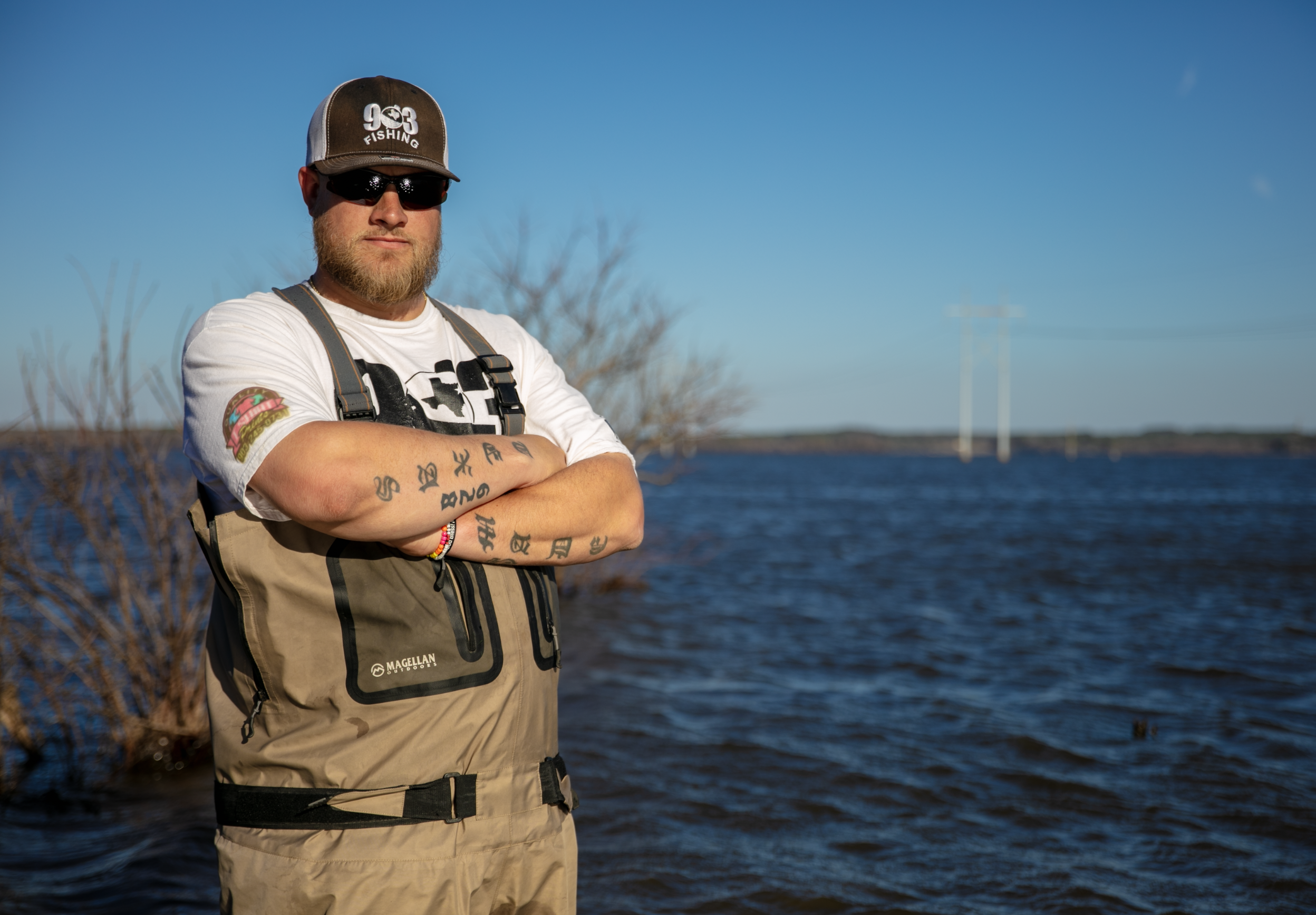by Jess Mowery
We all spotted the pot-bellied, rusty colored monarch from just over 1,000 yards. Even at such a distance, the buck’s antler mass and front tine length were noticeable, as well as the L-shape of his main beams, typical of a mature trophy class axis.
Something needs to happen quickly, I thought to myself. The big fella had started to move, left to right, following his group of 13 doe. “Shoot!” I said, although nobody could hear me. I had stayed behind, high atop a ridge, looking through binoculars and squeezing a handheld radio while my wife, Stephanie, and Jordan, our guide, attempted to get within a reasonable shooting distance.
Six months earlier, with the Texas white-tailed deer season ending, Stephanie had shown me a series of Instagram posts from Perennial Outfitting, with each post showcasing mature animals of various species. After a phone call to owner Kolton Moore, it was obvious we shared similar thoughts on producing and harvesting trophy animals. Kolton and his guides only hunt free range, fair chase animals on large ranches—over 50,000 acres total in Texas. When I told him we were looking for a mature, low fence trophy axis on a large ranch, Kolton assured me he had the right combination of resources to meet our goal. “Make sure both of you can hike,” he said upon booking the hunt, adding the qualifier of up to 4 to 6 miles a day. Stephanie didn’t flinch when I told her she would be stalking axis deer in July, in Southwest Texas, over rugged terrain full of plants and animals that poke, bite and sting. She stays physically fit and is always up for any outdoor adventure. Simply put, she is a beautiful flower but not a delicate one!
The ranch we were hunting covers 14,000 acres in Edwards County adjacent to the Nueces River and several dry tributaries. Hunting has been a way of life on this ranch for thousands of years, as evidenced by multiple Native American sites and hundreds of artifacts found by the ranch owner and his family. The terrain varies from rocky hills to outright bluffs and crossing the dry river bed is akin to walking 200 yards over bowling balls. Despite the challenges, the scenery was incredible, and, if not for the giant buck below me, I would have been content to just sit and admire God’s creation.
Now, 25 minutes into the stalk, each of the 13 doe had begun to leave the grassy meadow, single file, into a deep draw running towards the river. The buck entered the first of three remaining openings. “Shoot!” I said again, as more doe disappeared into the draw. The trailing doe entered the third and final opening with the buck close behind her. “Shoot!” I begged.
As my own heart rate and emotions escalated with the buck’s every step towards cover, I had no idea what was happening below me. On their way downhill, Jordan and Stephanie spooked a white-tailed doe. If you white-tailed hunt, you know what happened next. The white-tailed doe sounded her alarm multiple times as she escaped. The axis herd alerted but didn’t spook. The big buck went back to feeding and his doe followed his lead.
Jordan and Stephanie reached the rock ledge he had in mind, only to find the herd had moved 150 yards or so to the west, preventing a clean shot. Using every live oak, yaupon and cactus cluster as cover, the two of them duck walked and bear crawled their way to another ledge. They were able to throw down a backpack and get prone just as the buck entered the last available opening (about the same time I was 800 yards uphill begging for Stephanie to shoot). As I watched through the binoculars, I heard Jordan let out a loud bleat. The buck stopped perfectly broadside, as perfect as any hunting TV show, and I knew the shot was imminent. A funny thing happened due to the combination of long distance, a suppressed rifle and 18 power binoculars—I saw the buck’s shoulder ripple from impact before I heard the muffled shot. At impact, the buck took off with only the power of his hind legs. All 13 doe exploded out of the back of the deep draw but the buck wasn’t with them. Looking back near the shot, I saw the telltale rusty color and white spots through the brush and knew the buck was down.
My one man celebration on top of the ridge was interrupted by a beep from the handheld radio. It was Jordan asking me about the shot and telling me to come on down the ridge towards he and Stephanie. I made a rapid descent, almost rolling several times, the reward being greater than the injury risk. When I reached them, I learned that Jordan had been looking at the rifle’s safety lever when Stephanie fired. It turned out the sequence of getting to the rock ledge, laying prone, ranging the 225 yard shot and firing had all happened in less than a minute. Action like that is what earns a guide a great tip! “Nothing wrong with the shot,” I said, “double shoulders and he didn’t go far.” Immediately I saw both of their faces change from nervous to excited, and maybe a little relieved. We found the old warrior on the edge of a clearing, 30 yards from where he had stopped broadside. He had incredible mass and the front tines were as impressive up close as they had been from half a mile away.
That evening we sat under a shade tree next to a water hole on the Nueces River, reflecting on the hunt. A herd of aoudad fed along a bluff, high above us. With an eager smile, I announced that I would call Kolton Moore the following Monday to book MY axis buck hunt for next summer. “Put him on a good buck, Jordan,” added Stephanie, “but make sure it’s a little smaller than mine.”












